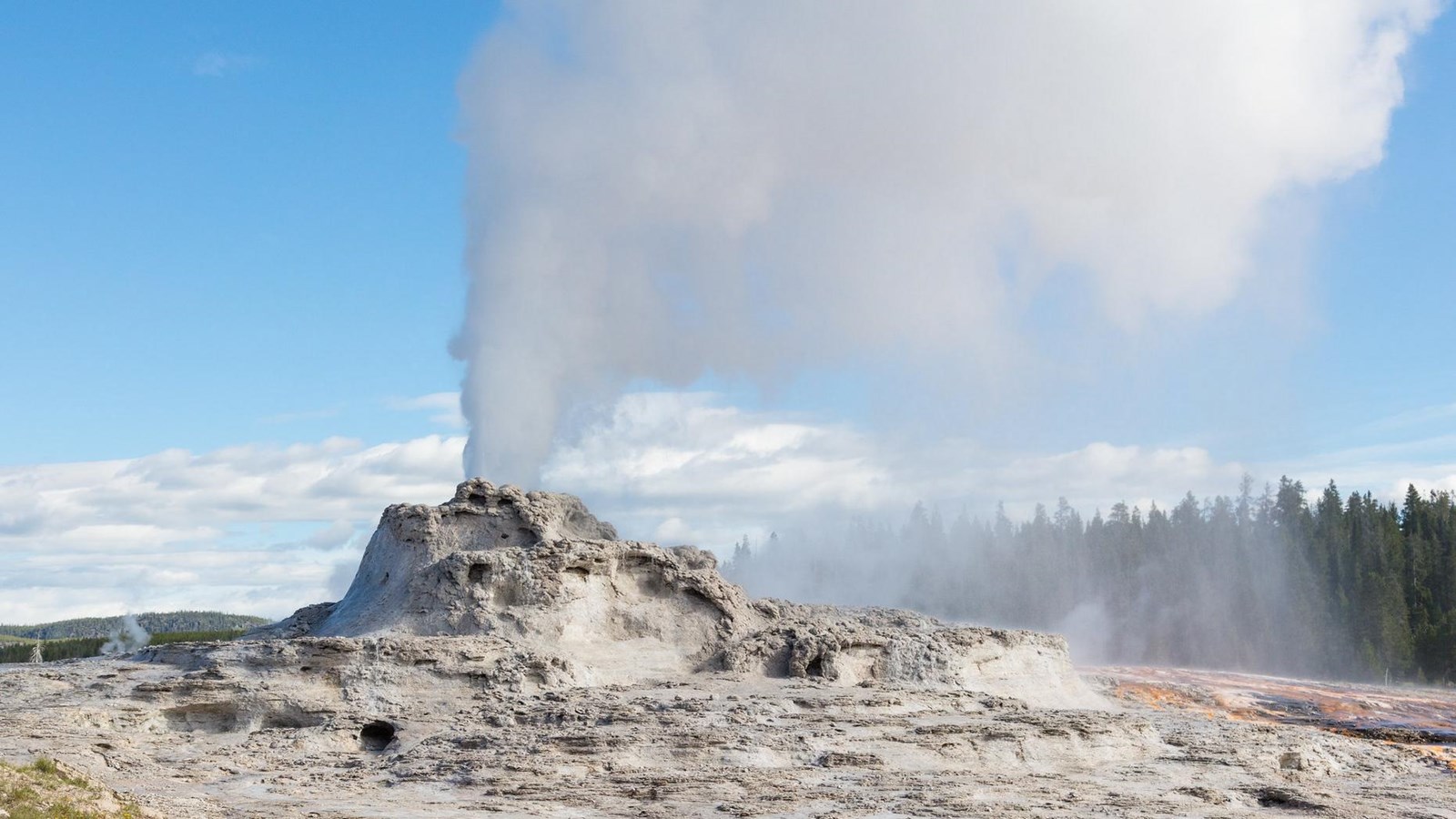Last updated: October 10, 2024
Place
Castle Geyser

Historical/Interpretive Information/Exhibits
The cone of Castle Geyser is thousands of years old and rests upon even older platforms. Together, they form one of the largest sinter formations in the world. Castle currently erupts, on average, every 14 hours.
The water eruption frequently reaches 75 feet (24 m) and lasts about 20 minutes, followed by a noisy steam phase of 30-40 minutes.
If Castle has a minor eruption (a few minutes of water but no steam), its next major eruption cannot be predicted.
Castle Geyser has a unique, large, tall geyserite cone structure that may be reminiscent of a castle. This large structure is possibly due to trees growing in the area years prior that became coated in sinter and allowed the height to build up. Layers of geyserite cascade in step-like terraces from the geyser vent and continues to cover the surrounding area. Due to this amount of fragile sinter and the height of the cone, the water is inaccessible for scientific measurements. The western side of Castle Geyser appears smoother than the sinter steps on the east side. As the story goes, thermophile mats use to live on the cone but were peeled off by visitors, permanently damaging the cone structure. Now the water flows down the east side and no thermophiles are visible.
Geysers
Geysers have constrictions in their plumbing systems that prevent water from moving freely to the surface where heat would escape. Water beneath the constrictions creates a buildup of steam. Eventually the steam pushes water past the constrictions and the geyser erupts.
Upper Geyser Basin
The majority of world’s active geysers are in the Upper Geyser Basin, including Old Faithful. Only four other places in the world have large concentrations of hydrothermal features: Russia (Kamchatka), Chile, New Zealand, and Iceland.
The heat for the hydrothermal features comes from Yellowstone’s volcano. Molten rock or magma may be as close as 3-8 miles (5-13 km) underground. Rain and snow supply water that seeps down several thousand feet (more than a kilometer) below the surface where it is heated.
Underground cracks form a natural plumbing system. Hot water rises through the plumbing to produce hot springs and geysers.
Use Caution in Hydrothermal Areas
- Stay on boardwalks and designated trails.
- Hydrothermal water can severely burn you.
- Never run, push, or shove.
- Supervise children at all times.
- Do not scratch hydrothermal mats.
You are responsible for your safety.
Think safety, act safely. Yellowstone is a dangerous place.
